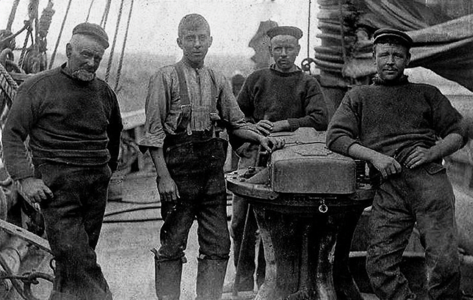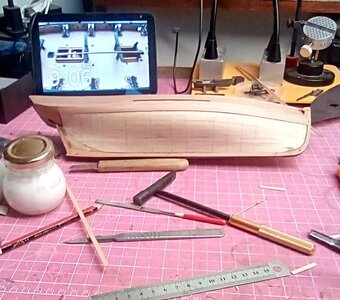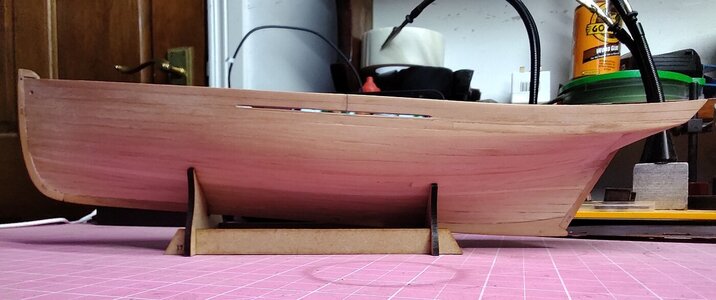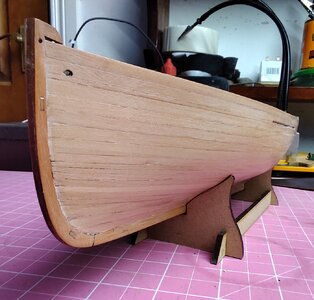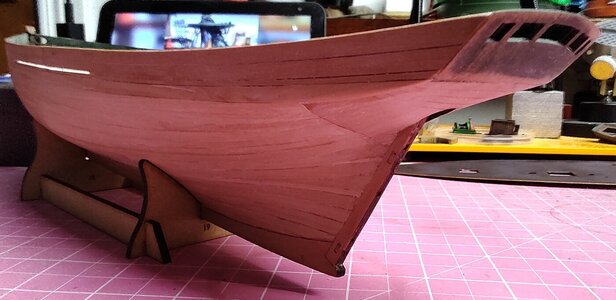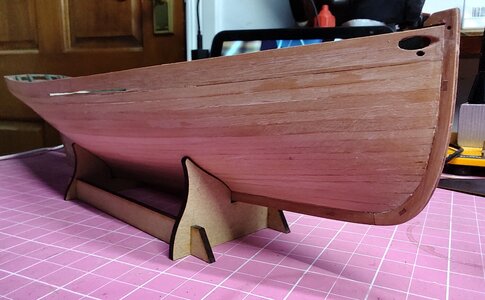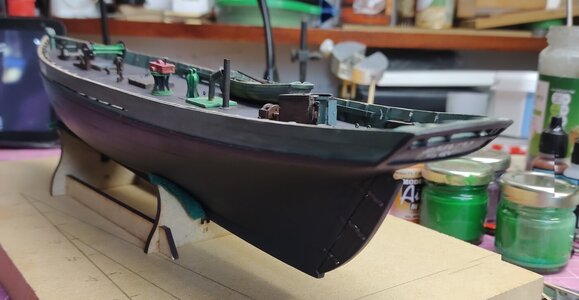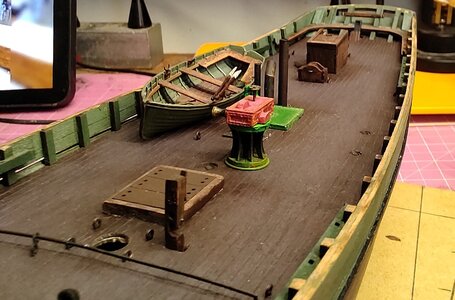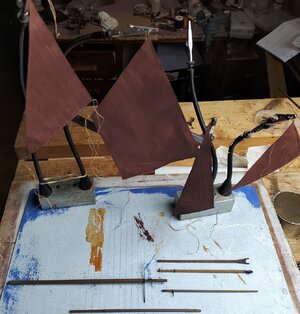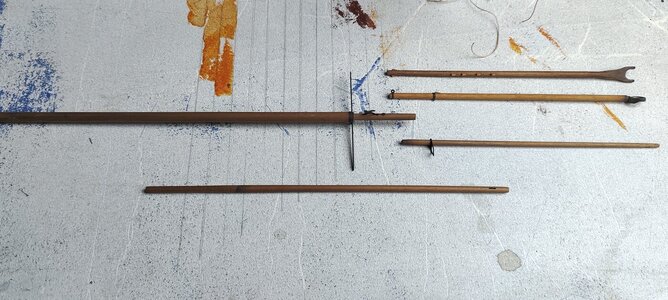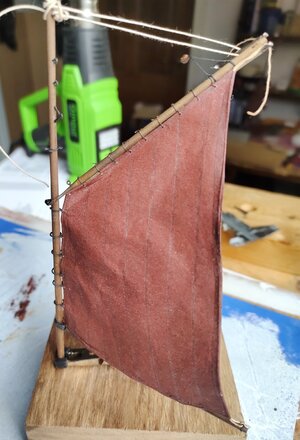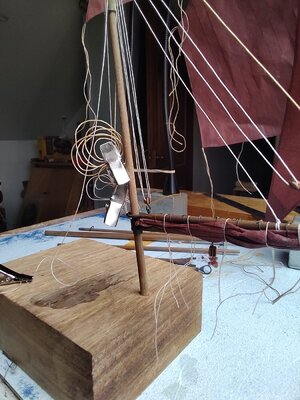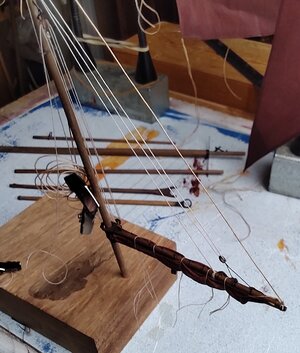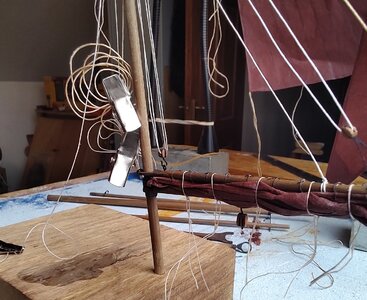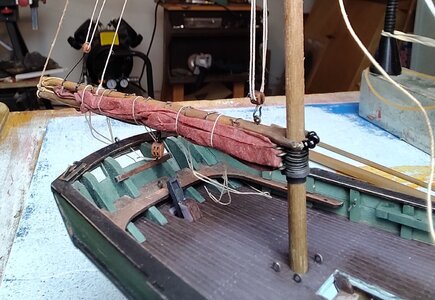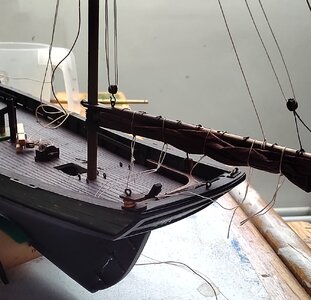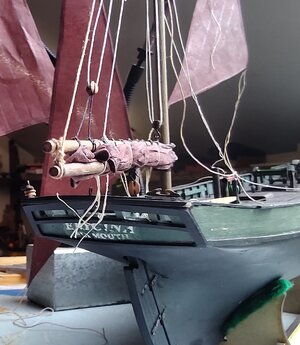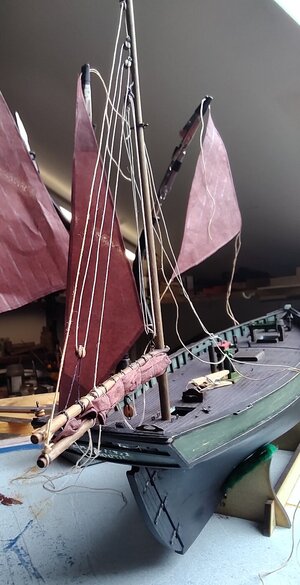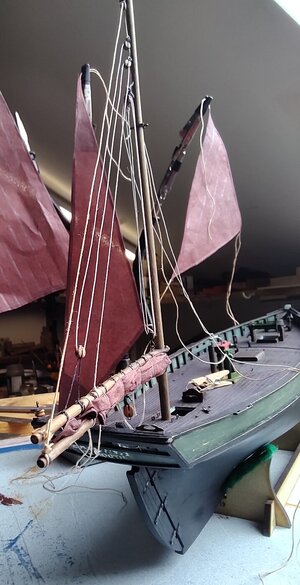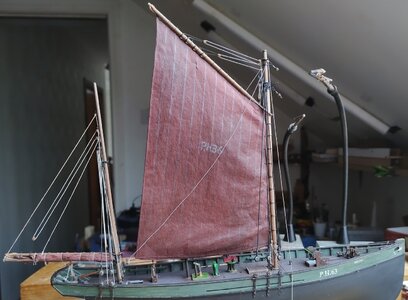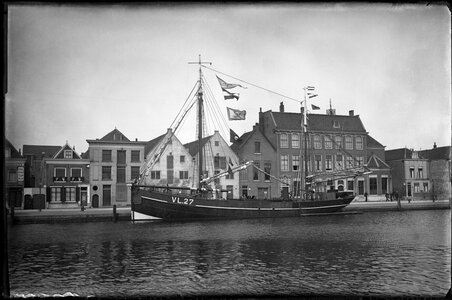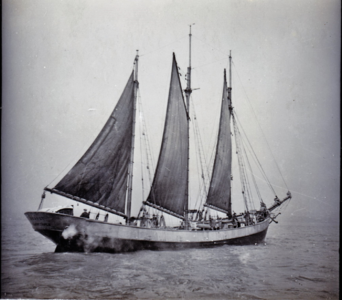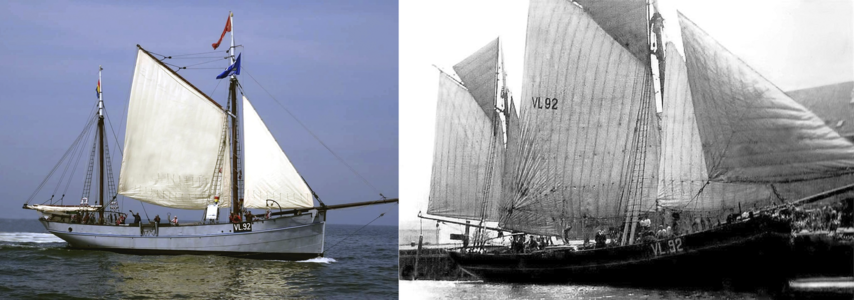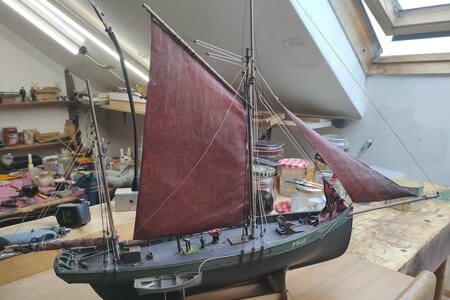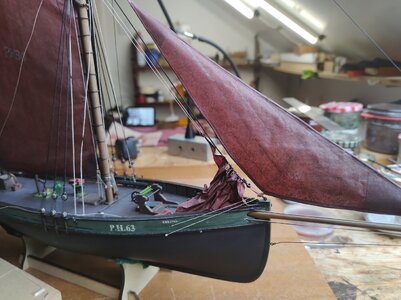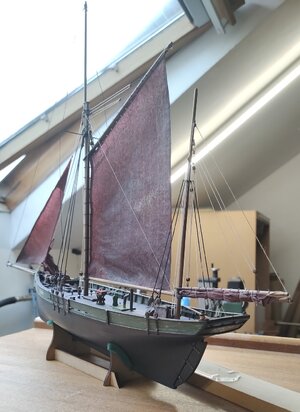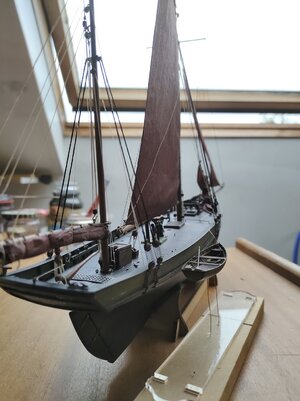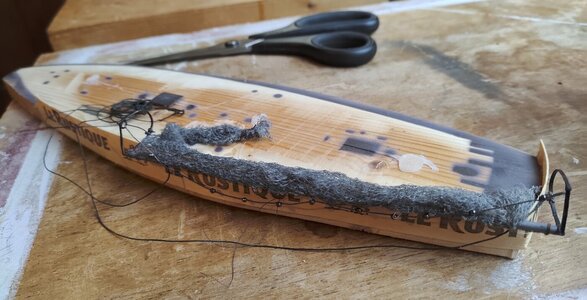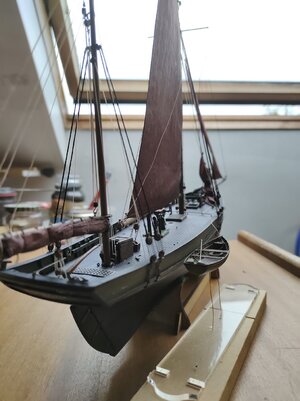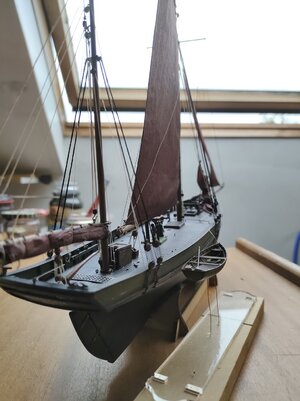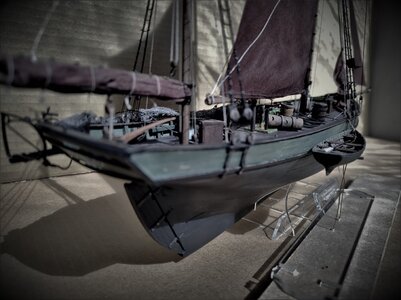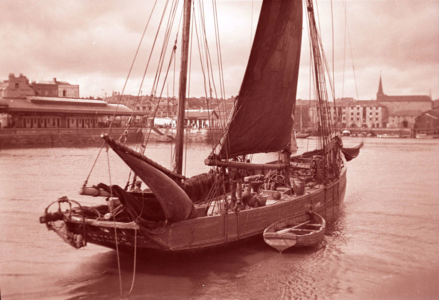Red sails, no sunset.
Hi folks,
Spent the week beginning work on the masts and spars and in between times made a start on the sails. The kit comes with a set of cotton like material sails for free, but I really do not like them, scaled up would be like hanging a giant soda farl on your gaff! Instead I went for some 18.0 gms per sq. metre silkspan, not the thinnest but then again not the dearest. As for the colour? Who knows, I went for a mix of scarlet, brown and red oxide, hoping for something dark and dirty,(did I really say that?),anyway I think it turned out ok.
View attachment 320990
The woodwork as you can see is mostly finished, I painted it with clear matt with A little bit of weathering at the ends.
View attachment 320991
I started with the mizzen mast and using the rings provided and by punching some holes for 0.1 thread I attached the mizzen sail to the gaff.
View attachment 320992
Since this one of the sails I want to show furled I then soaked the whole sail with cold water and when it softened I eased the gaff down towards the boom and tied it of, as in the pics below.
View attachment 320993View attachment 320994View attachment 320995
Being a commercial fishing boat I am not too concerned how neat it is. In fact looking at the pictures I have found of 19th century trawlers it is becoming clear that by the time the photograph of Erycina entering Plymouth Barbican at the beginning of this log she is not in the first flush of youth, I hope to be kinder on her (slightly). Anyway, although no where near finished, I couldn't resist popping the mast on her and here are some pics..
View attachment 320996 View attachment 320997View attachment 320998 View attachment 320999
To my eye this wee sail looks more natural than I could make with textile, now how to make a realistic looking trawl net, hummm..
View attachment 321000




